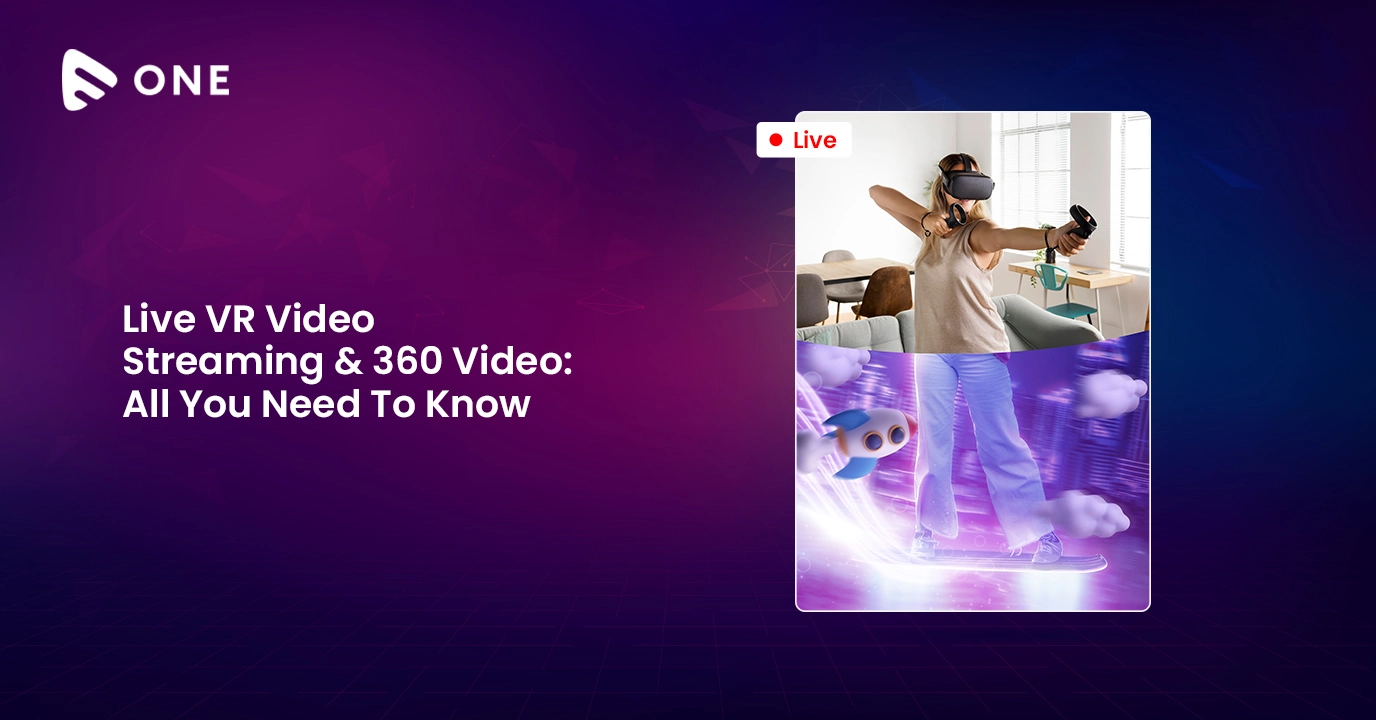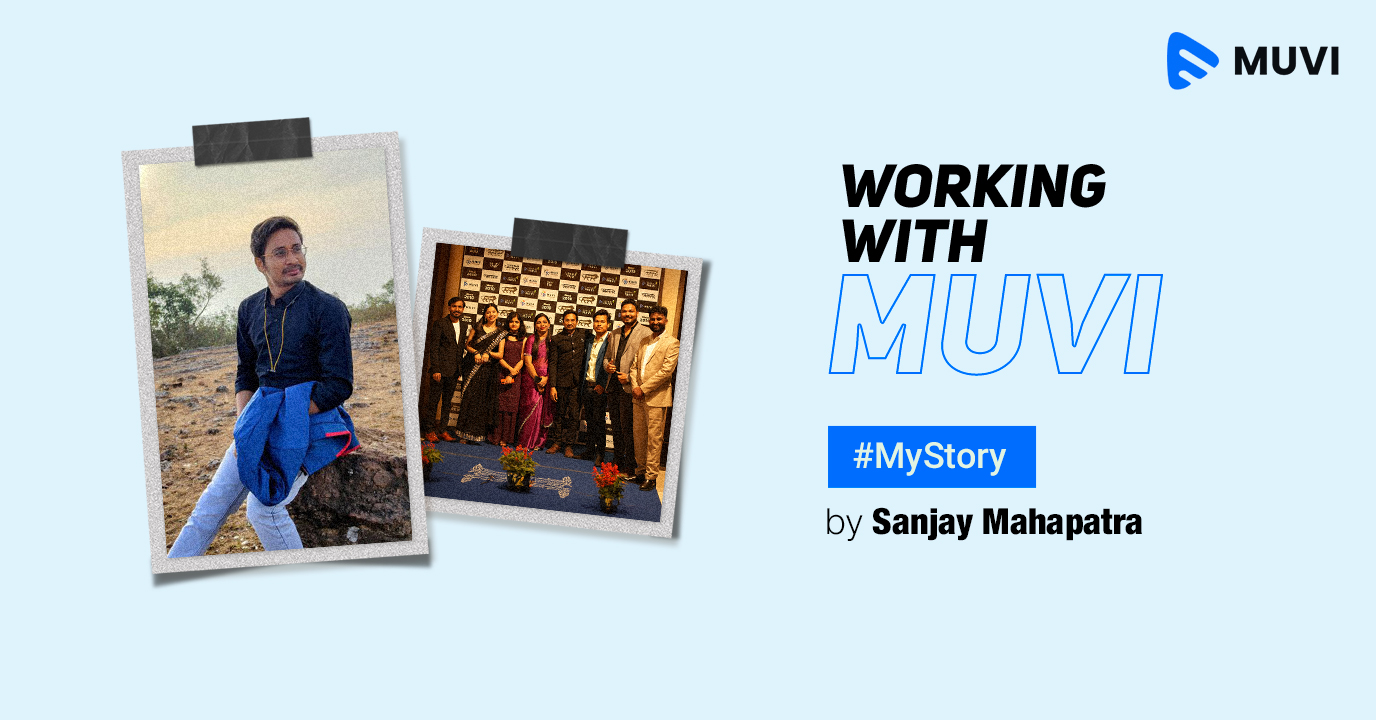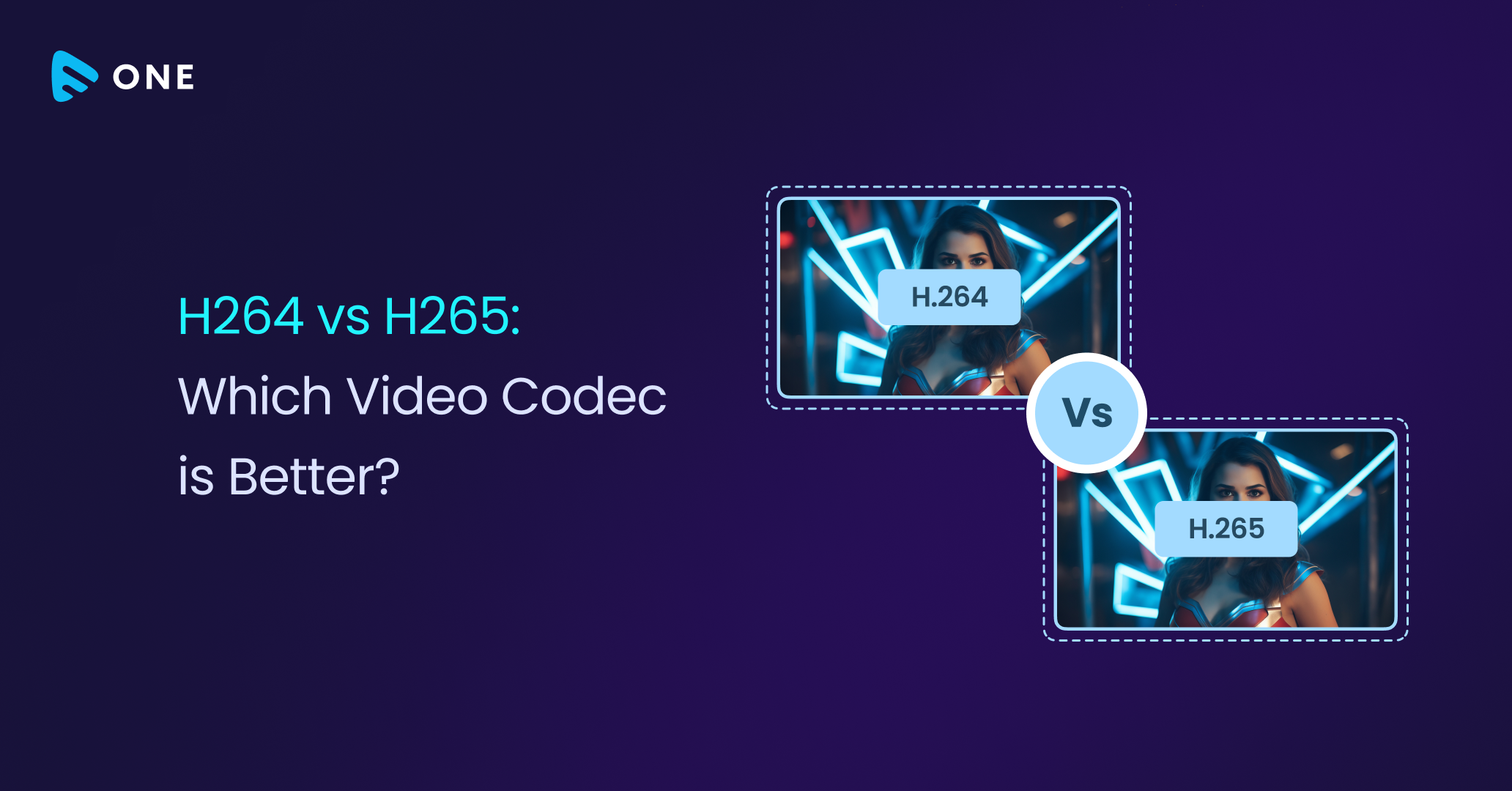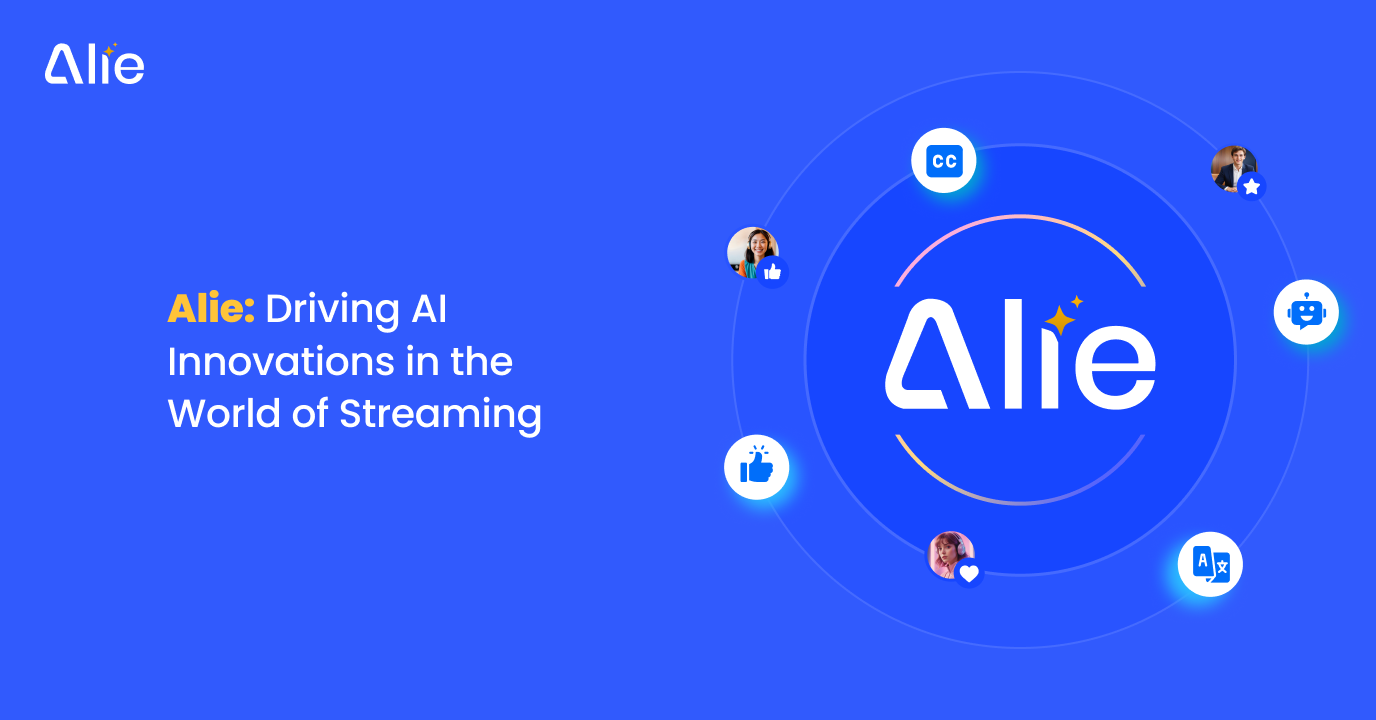Video is improving day by day both in terms of the quality of the content and the way it is being delivered across devices. VR or virtual reality-based live streaming is the latest addition to the huge potential of video and its applications are immense. Although the technology is still in its nascent stages, developments such as the Apple Vision Pro and Meta’s VR project promise futures for the technology.
We all must have tried some form of VR technology (if not, go for it) and there are a few observations that come up. In some cases, it seems the angle of the camera is fixed and in other cases, you feel more free to roam around in VR. Well, that is a very primitive difference between VR and 360 video. While both use very different approaches to technology and its deployment, there are similarities too as they give users an easy opportunity to get a larger than live unique video experience.
In this blog, we are going to learn a little more about what is VR-based streaming and how it is different from 360 video and get to know how these technologies developed. The blog will also talk about how you as an individual can integrate VR into your live streaming needs and discuss in detail the possibilities of deploying applications and live streaming solutions around it.
Virtual Reality: Sneak Peak Into History
The history of virtual reality (VR) is older than you might think. Major developments have happened in the last few years, that is true but the technology started giving glimpses of its potential and it all started with the introduction of Sensorama in 1956 which is believed to be one of the earliest applications of VR technology. Developed by Morton Heilig, this was even patented in the United States and was defined as a multi-sensory technology. He further improved on his design to create the first VR head-mounted display and called it Telesphere Mask which provided 3D visuals with sound too.
When we talk about multi-sensory technology, a lot of devices were built before that as well. For example, in the 1930s, fiction writer Stanley G created Pygmalion Spectacles that used a pair of goggles that used to let users experience holographic, smell, taste, and touch in a way is a very primitive design of the most used VR gears of today.
The 1960s and 1970s saw a lot of products that tried to explore the power of VR. From the Ultimate Display by Ivan Sutherland to the conceptualization of a digital flight simulator offering 180-degree visuals, VR was beginning to have a strong presence in the video research domain, Krueger’s Videoplace introduced in the 1960s is widely regarded as one of the world’s first interactive VR system capable of identifying user position and delivering visuals accordingly.
The technology was discovered but not named. It is believed that in 1987, Jaron Lanier, founder of visual programming lav coined the term Virtual Reality and started research on creating standalone virtual reality devices. They were the first ones to sell VR goggles with their product EyePhone 1 priced at US$ 9400. Soon even NASA got into VR to create space simulations to train astronauts. The 90s saw a series of VR games such as Nintendo Virtual Boy and the last 20 years have made significant developments in the domain.
Mobile VR became popular as a tool to try something new and soon when Meta (then Facebook) bought Oculus and Apple started developing their own VR headsets, it started a series of software as well as hardware developments to access the immense potential of VR technology. Apple introduced its Vision Pro in 2023 comprising of hardware and software potential seen never before and it is still the dawn phase of the technology revolution.
Applications Of VR Video Streaming & 360 Video
There are a lot of use cases where VR and 360 video can be deployed. Here are a few of them where we feel a lot of developments are going to happen in the near future and it is going to redefine the streaming industry.
Live Sports Events
Some platforms like JioCinema have started broadcasting 360 footage of cricket matches and it is just the beginning. Sports is a very dynamic activity and the traditional methods of delivering live feed do not give users the access of complete frame of entertainment. Cameras are either focused on specific players or a bird-eye view that is unclear and mostly of no use. 360 streaming can give a more immersive sports streaming experience to the fans sitting at home.
On-Demand Entertainment
Imagine watching a movie on a giant 100 inch virtual screen and you can change the perspectives and camera angles at will. Currently just a concept, VR when used with incredible detailing can create that video experience when the user is not restricted to the creator’s vision but can create their own visual perspective of the content.
Training & Simulation
A lot of jobs such as driving, flying an aircraft, and going to space require a lot of training. Some of that training can be replaced with VR-based training modules that use technology to extract the best immersive experience of the actual task and thus train better. The same can also be deployed for industrial training for individuals on how to use machines, delivering more immersive lectures, and so on.
An important point to note here is that all these applications and many more require major software and hardware changes to deploy and as said before, the VR technology is still at its nascent stages and therefore, it will take time for VR to be more easily deployable and affordable to the end user.

Difference Between VR Video Streaming And 360 Video
Sounds similar but they are not. In fact, while it is true that a major chunk of VR streaming is currency, not VR but stretched 360-degree video streaming, the technology looks promising, and significant developments are expected in the future. Here are a few major differences between the two just for reference.
VR Video Streaming | 360 Degree Video |
VR allows users to fully immerse into the artificial environment and interact with it using gestures and physical movements. | 360 video just gives a panoramic view of the video footage that users can interact with using head movements but no further interaction is possible. |
Example: Apple Vision Pro as a computer is a VR technology where you can walk and still use it, have multiple tasks open, and immerse yourself in the artificially generated world. | Example: Watching a 360-degree format video on Vision Pro controlled by head movements. |
Involves very complex creation methodologies that include 3D modeling, animation, and programming. | Requires special cameras to record 360-degree footage that is digitally rendered and edited to help users get an immersive video experience. |
Special VR headsets are needed | Less specialized equipment is needed and can be deployed on mobile phones too |
Here we would like to point out that VR headsets are very expensive with the latest Apple Vision Pro selling at US$ 3499/-. However, 360 video is different and can be deployed on phones and web browsers, and simple VR goggles and even a mouse can give you control over 360 videos. In the next section, we will talk about how 360-degree content is produced and deployed.
Step By Step Process Of 360 Degree Video Deployment
Creating and deploying a 360 video is a tedious and expensive process. This is due to very expensive equipment that is needed and at the same time, enhanced software that is specifically designed to process 360 video format.
Step 1: Creation Of Content
Modern cameras today provide options to record panoramic footage. Cameras such as Insta360 offer such capabilities for vlogging but if you are doing professional recording, multiple cameras have to be set up, and several raw footage are then combined to generate a video file that gives an immersive experience.
Next, the sound recording has to be different as well because angles change in videos and so should the audio in terms of its bass, treble, and distance. 360 video streaming requires enhanced sound editing to suit the needs of immersive technology.
Step 2; Stitching & Final Production
Once multiple footage is captured and audio is recorded, individual footage is stitched together using special software. Many video editing tools such as Final Cut Pro, and Adobe Premiere Pro offer stitching capabilities. Multiple footages are aligned and edges are blended to create a spherical-like video footage. Special software is to be deployed like Muvi Live for this process to be automatic and ready for instant live streaming of the content.
Step 3: Encoding & Delivery
The files are then encoded into streamable formats and since these are particularly large files, the encoding process needs time and a more powerful hardware encoder or computer is necessary.
Another point to note here is that since video files are quite large mostly in 4k resolution at a higher frame rate, special codecs should be deployed to reduce bandwidth if possible. The technology as we said before is still relatively new and therefore, more and more changes are going to be seen shortly in terms of encoding technology and codecs used.
Step 4: Content Consumption
Users then need to use specific applications that support 360 viewing and use add-ons on their mobile devices or dedicated VR goggles to consume such content. This also means the video player needs to be modified to allow for such content streaming on desktop and mobile-based content streaming.
Challenges In VR and the Future Of VR Live Streaming
If you have read till now, you must have realized that VR is a very complex technology that requires expensive hardware both to create and access content. In addition to that, such devices that record content and devices that access them in expected formats and orientations are still very expensive making it a very niche market to get into.
Also, they require increased data consumption and bandwidth as the aspect ratio becomes very high. This will need better internet infrastructure and ultimately, will also lead to increased power consumption.
Software development for VR is another major challenge and all major streaming platforms are still thinking if it is a profitable option or not. The use cases are immense but it is way more difficult to shoot content in VR and then stream it. Also, users are complaining about feeling nauseated and fatigued with the usage of VR head gears and this has also drawn the attention of the medical community regarding the long-term health impact due to usage of such headsets.
On the brighter side, VR has seen global hardware and software players coming into the market for development, and with the right scalability and affordability, VR is going to rise exponentially in the future. The technology can make a lot of training risk-free and with the use of the right robotics, make a lot of tasks a little less dangerous and easy for mankind. The future is bright and it’s not just for entertainment but for redefining the meaning of video using it to its full potential to ease tasks.
How To Start Streaming VR Content?
VR as said many times before is still developing and so is the software around it. Here is Muvi One software that we believe is best of you are looking to create your own on-demand as well as live video catalogue for a VR audience.
Muvi One: Apple Vision Pro App Builder
Apple Vision Pro is currently being seen as the most advanced VR headset and since it has its operating system, Muvi One helps producers build curated applications that work on Vision Pro and other VR headsets. Muvi One offers a tailored solution for crafting your own Apple Vision Pro app, ensuring it aligns with your unique brand identity. Leverage the next-gen AR & VR technology, and provide an immersive streaming experience.
Features
- Native Vision Pro app with customization flexibility
- Delivers on-demand and live content
- Offers in-app purchase and multiple subscription options
- Multiple language support
- Utilities such as device restrictions, watchlist, favorites, recommendations, etc
Similar platforms can be built on the operating system of your choice. Feel free to contact our sales team to discuss VR-based streaming possibilities and we will come up with the best solution for you.
















Add your comment